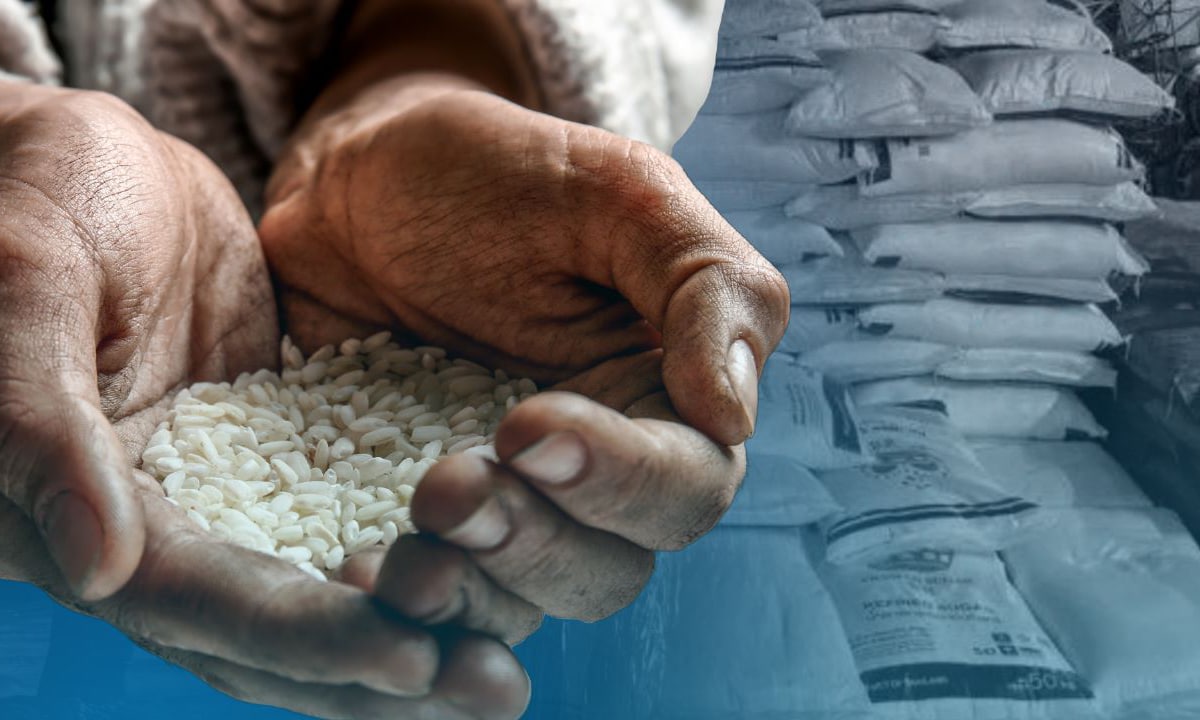MANILA, Philippines––As President Ferdinand Marcos Jr. addressed Filipinos for his third State of the Nation Address (Sona) on Monday (July 22), he made clear that local production, especially of rice, will be given priority by the government.
“Kaya patuloy nating sinusuportahan ang sektor ng agrikultura, upang mapabilis, mapadali, at mapalakas ang produksyon […] upang maiwasan din ang pagkasira ng mga produkto,” he said in his third Sona.
(That is why we are continuously supporting the agriculture sector to accelerate, facilitate, and strengthen their production […] to prevent their products from being damaged.)
But is this enough?
Marcos stated that in the past year, the government already distributed over 100 million kilos of seeds and fertilizers to farmers, and over 500 million fingerlings and 3,000 boats to fishermen.
READ: Highlights: Sona 2024
He said, too, that by yearend, 1,200 kilometers of farm-to-market roads will be completed and that over 9,300 farm equipment and facilities will be distributed and constructed. Over 80,000 hectares of land are expected to be irrigated.
Over the past two years, he said that P9 billion was given to farmers and fishermen hit by El Niño, which, based on data from the Department of Agriculture (DA), caused P9.5 billion in damage and affected 175,063 agricultural workers.
However, as pointed out by the local think tank Ibon Foundation: “Are hyped support for agricultural producers substantial so that farmers and fisher[men] will be truly uplifted from being ironically the poorest sectors of the population?”
READ: Fisherfolk, farmers, rural communities poorest in 2021 — PSA
Based on data from the Philippine Statistics Authority (PSA), farmers and fisherfolk were still the poorest across all basic sectors in 2021, having a poverty incidence rate of 30 percent and 30.6 percent, respectively.
Disregarded
As the Kilusang Magbubukid ng Pilipinas (KMP) stressed, while Marcos was expected to brag about everything he has done as yet, most of his programs “are not real solutions to systemic problems.” They are “not even palliatives,” KMP said in a statement.
Last month, in a bid to tame inflation, Marcos issued Executive Order (EO) No. 62, slashing the tariff rate on imported rice from the already lowered 30 percent to 15 percent.
READ: Marcos formalizes rice tariff cut via EO 62
While this is expected to bring down the retail price of rice by P6 to P7 a kilo, the reduced rate is seen to hurt millions of local farmers who are already finding it tough to lift themselves out of poverty.
Based on data provided by Dr. Teodoro Mendoza, a retired professor of crop science at the University of Los Baños, only a week after EO No. 62 took effect, the farm gate price of palay had already decreased by P6 to P7.
From P23 to P25 a kilo, it is now P17 to P18, he said.
“It is anticipated that palay prices will decrease further come November to December, when palay planted in July to August shall be harvested,” Mendoza told INQUIRER.net.
Losers
While Malacañang explained that EO No. 62 was issued to control inflation and make the grain more affordable, especially to the poor, the Federation of Free Farmers (FFF) previously pointed out that local producers will once again be disadvantaged.
As pointed out by Mendoza, who calculated the net income for every hectare in varied palay prices from P15 to P25 and rice yields from 4 to 10 metric tons every hectare, local farmers will soon be discouraged from producing rice.
He said that at an average rice yield of 4 MT per hectare, farm gate palay price of P15 to P16 a kilo will make rice farming unprofitable with average incomes of P4,100 and P580. As he said, farmers will certainly lose money.
“They will lose motivation to work harder to increase their yield,” he said, stressing that in some provinces, producers are already saying that they will no longer till their land for selling, but only for their consumption.
Mendoza explained that while 5 MT per hectare is achievable and that farmers will have a “respectable income” of P53,100 at P25 a kilo farm gate price, the problem is that only a few provinces are able to produce that yield.
Then at P15 to P16 a kilo of farm gate, farmers will also lose interest since their income would still be “very low” at P9,100 to P13,500 for 5 MT per hectare and P22,300 to P27,580 for 6 MT per hectare.
Wake up
Mendoza said that it is only at a very high yield of 8 to 10 MT per hectare when farmers would be able to earn P75,100 to P83,900 even at a farm gate price of P15 to P16 a kilo.
But “the reality is that there are only a few farmers who are getting 8 to 10 MT rice yields for every hectare,” he stressed, stating that “the average area of our rice farm is less than one hectare, or 0.84 hectare.”
For Raul Montemayor, FFF president, “any new tariff reduction will be useless if our foreign suppliers jack up their prices, especially since they know that we have no choice but to buy their rice.”
READ: Supreme Court asked to nullify EO 62 lowering tariffs on agri products
A petition for certiorari and prohibition was already filed at the Supreme Court on July 4, but no Temporary Restraining Order was issued before EO No. 62 took effect on July 6.
READ: EO 62 still in effect without TRO from SC, says OSG
This was not tackled by Marcos in his latest Sona, except when he said that the government extended reduced tariff rates to facilitate the importation of rice, corn, and pork until the end of this year.
He said this as he pointed out that while last year’s palay output was higher than 19.76 million MT in 2022 at 20.06 million MT, it only translated to 13.5 million MT of rice, which he said, is still 1.85 million short of the required 16 million MT.
